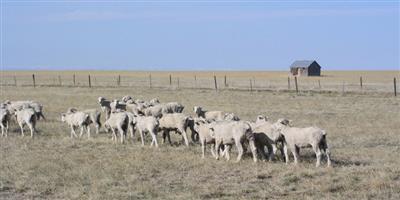There is an ongoing sentiment in the American sheep industry that the animal inventory is greater than that captured by federal and state lamb slaughter data. The belief is these “missing lambs” are being diverted to nontraditional or ethnic marketing channels and therefore are not being captured in the post-lamb crop inventory and slaughter data.
In 2010, the American Sheep Industry Association prepared the Nontraditional Lamb Market in the United States: Characteristics and Marketing Strategies. It was a broad look at what was termed the nontraditional lamb market. The 2010 study found that about 1 million head of lambs were missing each year, nearly one-half of federally inspected lamb slaughter. This was calculated by taking the difference between the higher American lamb crop (less some death losses) and federally inspected sheep and lamb slaughter data.
In 2020 – 10 years later – the American sheep industry has experienced dynamic changes that affect the nontraditional calculation. For example, the number of lambs slaughtered by state and custom-exempt slaughter facilities nearly doubled from 2010 to 2019. Two models were developed to estimate the number of lambs channeled into the nontraditional market.
The first model – similar to the 2010 model – constraining slaughter to year of birth, found that the number of lambs channeled to the nontraditional lamb market was reduced sharply as changing market dynamics were incorporated into the model. During 2010 to 2019, the average nontraditional estimate per year was 96,686 head.
The second model accommodating for different birth and slaughter years produced very similar estimates to the model that constrained slaughter to the year of lamb birth. It also concluded that the number or percentage of nontraditional or “disappearing lambs,” based on data currently available, is significantly lower than estimates using the methodology described in the 2010 study.
This research indicates that lambs that originally “fell through the cracks” or were “missing” were being increasingly slaughtered in federal or state inspected facilities. The growth of Halal slaughter facilities, the growth of smaller plants and the average lower live weight at slaughter of lambs in non-federally inspected slaughter suggests that the industry might be developing into two distinct commercial markets: commercial lambs slaughtered by the largest lamb packers with a live weight at slaughter of more than 140 lbs. and lightweight lambs averaging 100 lbs., slaughtered primarily by state, and increasingly by federally inspected, facilities.
For more on the 2020 update to the study, read the November and December issues of the Sheep Industry News.
###
American Sheep Industry Association


